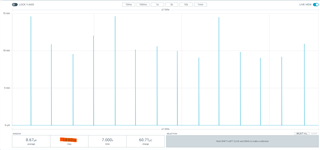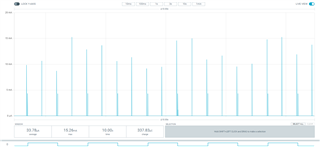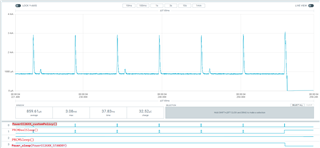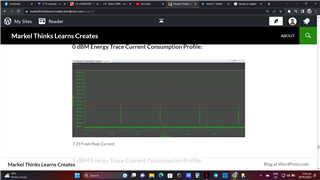Other Parts Discussed in Thread: CC1310, SYSBIOS, ENERGYTRACE
We have power issues in general getting the CC1310 && CC2640R2 to operate in "real" low power mode as described in the SWRA578B document.
The problem we have is testing seems consistent when not setting the "POWER_SAVING" compiler predef flag and just weird when we do.
We are trying to build simple sensor beacons for both these devices, but lets only look at BLE for now.
Our simple beacon transmit power peaks seems correct and idle current OK, with POWER_SAVING disabled.
But cannot make sense when we enable POWER_SAVING.
So we went back creating a simple APP which only start the TI-RTOS BIOS and nothing more, and we see the same weirdness power peaks here.
The idea is to build the BEACON app bit by bit ensuring the power usage is predictable.
Below is a graph of the power.
Where do those 8mA+ peaks come from?
Debugger is detached while testing, but when we do debug it shows the device is in deep sleep, step 6 below in the standard PowerCC26XX_standbyPolicy.





